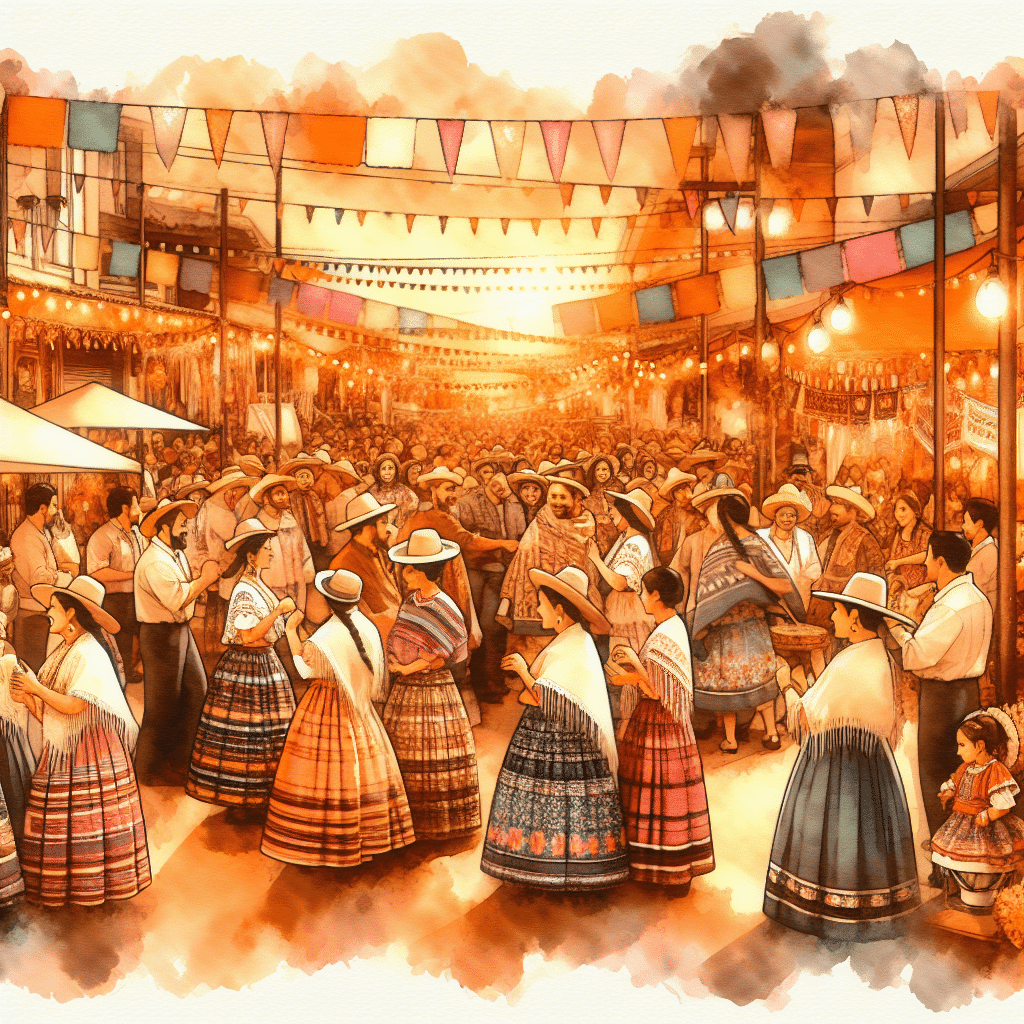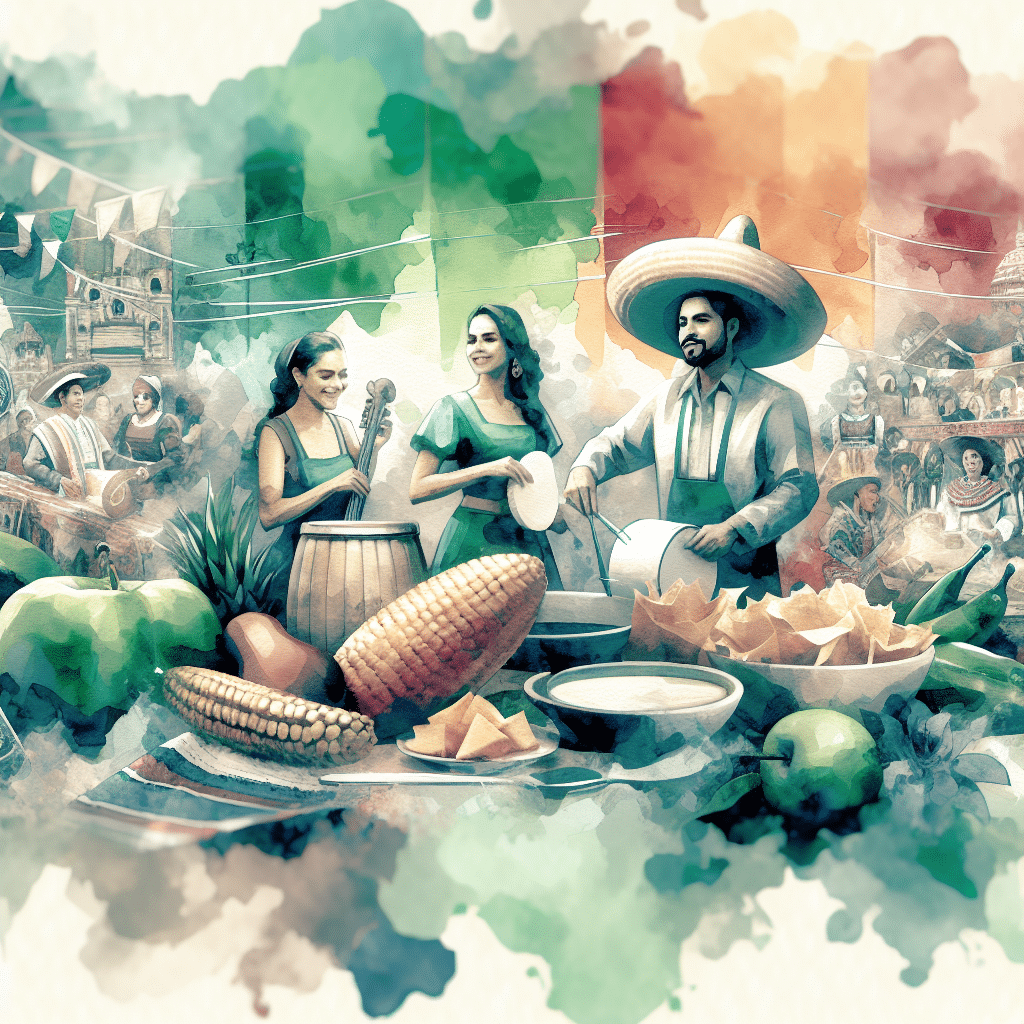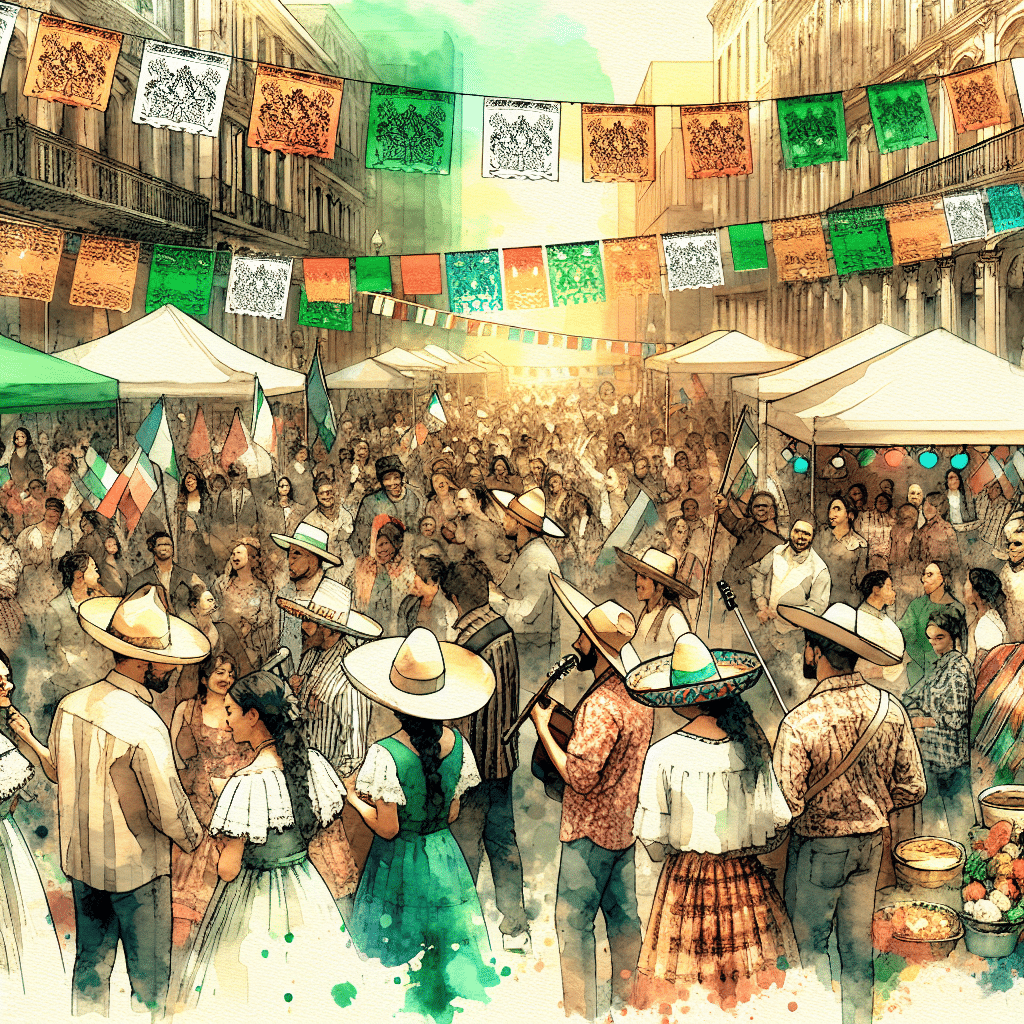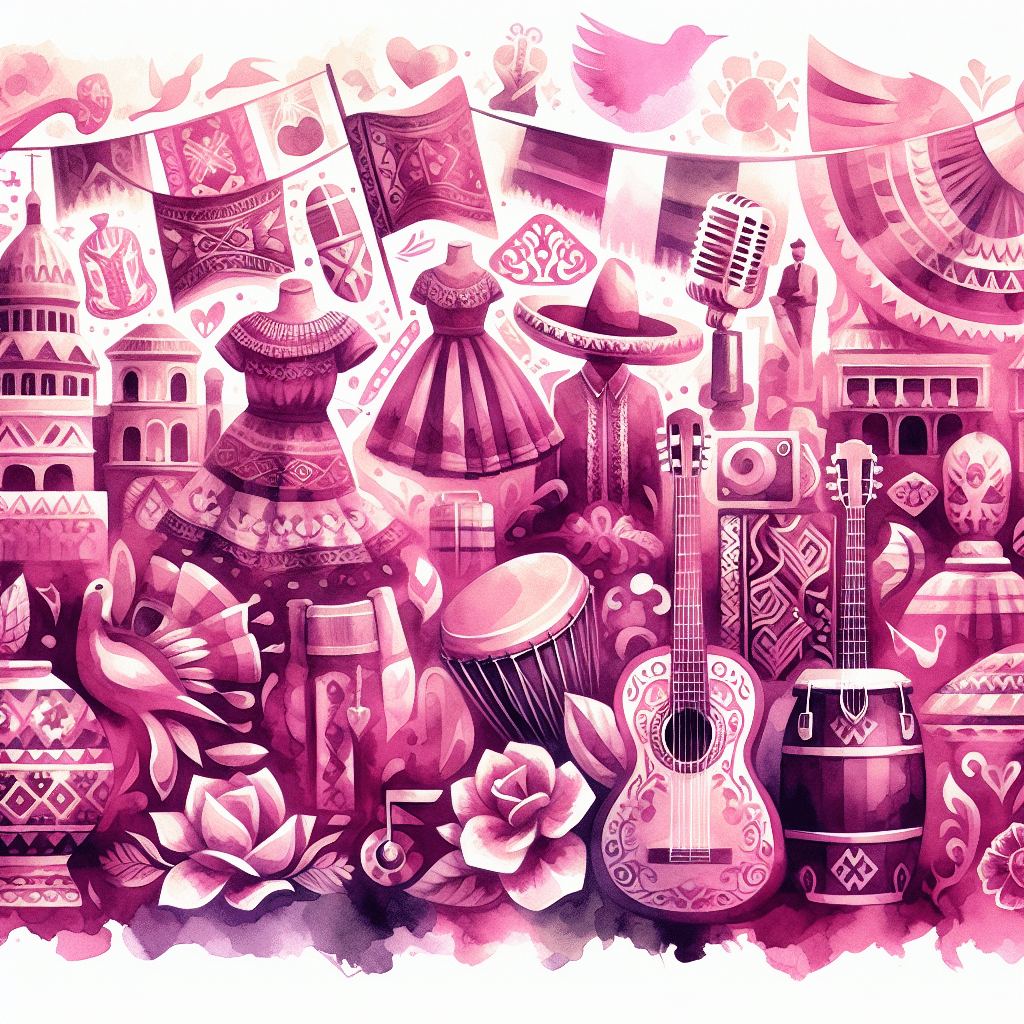
Latino Religious Festivals: A Blend of Faith and Culture
Latino Religious Festivals
Latino religious festivals are a colorful mix of traditions, history, and culture. These celebrations, heavily influenced by Catholicism, bring communities together in a unique blend of faith and festivity.
Catholicism’s Impact
Catholicism is at the heart of many Latino religious festivals. The Roman Catholic Church’s calendar sets the stage for various dances and rituals across Latin America. Music, especially during processions, adds to the spiritual vibe of these events.
These festivals often honor patron saints and the Virgin Mary, blending religious devotion with social and cultural activities. It’s not just about faith; it’s about community, tradition, and celebration.
Cultural Fusion and Social Influence
The mix of cultures in these festivals is fascinating. After the Spanish conquest, indigenous dancers were allowed to keep their rituals, but with a twist—they incorporated Catholic saints and ideas. This blend created unique cultural expressions seen in many Latino festivals today.
One example is la danza de la conquista, a dance that became part of colonial religious festivals and played a role in entertaining and educating colonial populations (Britannica). These dances even made their way to Spain, influencing further rituals in the New World.
Another example is the dance of Moors and Christians (la danza de Moros y Cristianos). Originating from medieval Spain, this dance is performed at major religious festivals across Latin America, depicting the Spanish against the Indians in various forms (Britannica).
| Festival | Country | Key Elements |
|---|---|---|
| Semana Santa | Spain, Latin America | Processions, religious robes, statues of saints |
| Día de los Muertos | Mexico, Latin America | Ofrendas, calacas, parades, traditional foods |
For more on specific festivals, check out our articles on the feast of the assumption and other festivals in Latin America.
Latino religious festivals are a vibrant mix of faith, tradition, and cultural fusion. They highlight the rich heritage and diversity of Latin American communities, showcasing the lasting influence of Catholicism and the power of cultural blending in creating meaningful celebrations.
Fiesta de la Asunción
Celebration and Significance
The Fiesta de la Asunción is one of the most beloved Latino religious festivals, celebrated widely in Catholic Spanish-speaking countries on August 15. It commemorates the belief in the assumption of the Virgin Mary into heaven. For many, it’s not just a holy day but an all-out fiesta blending faith, culture, and a dash of hilarity.
Mary, the mother of Jesus, holds a special place in the hearts of Latin Americans. During this festival, communities come together to honor her through various rituals and celebrations. The day often involves attending mass, followed by lively street parties, feasts, and cultural performances. It’s a perfect blend of solemnity and festivity, where devout prayers meet dancing feet.
Rituals and Processions
Rituals and processions are the heart and soul of the Fiesta de la Asunción. The day typically begins with a high mass in honor of the Virgin Mary. The church bells ring out, calling the faithful to gather for a service filled with religious music and prayers. After the mass, the real action begins—the processions.
In these processions, participants carry statues of the Virgin Mary through the streets, often dressed in elaborate attire and surrounded by flowers. The air is filled with the sounds of traditional religious music, creating an atmosphere that is both reverent and joyous. These processions are not just a display of faith but also a vibrant cultural expression.
| Event | Description |
|---|---|
| High Mass | A religious service honoring the Virgin Mary |
| Processions | Parades featuring statues of Mary, often elaborately decorated |
| Religious Music | Traditional hymns and songs performed during the ceremonies |
During the processions, people often participate in dances that have been influenced by the Roman Catholic Church’s calendar of festivals and commemorations. These dances are not only a form of worship but also a way to keep cultural traditions alive. For more on the influence of these dances, check out festivals in Latin America.
As the sun sets, the festivities continue with communal feasts and street parties. Food stalls pop up everywhere, offering a variety of traditional dishes. It’s a time for families and friends to come together, share a meal, and celebrate their shared heritage. For those looking to dive deeper into such traditions, explore our article on traditional Latino celebrations.
In conclusion, the Fiesta de la Asunción is a perfect example of how deeply intertwined faith and culture are in Latin America. It’s a day that brings communities together, blending solemn rituals with joyous celebrations, making it one of the most beloved latino heritage festivals.
Moors and Christians Dance
The Moors and Christians Dance, or “la danza de Moros y Cristianos,” is a captivating blend of culture and history. This dance, which started in medieval Spain, has made its way into Latino religious festivals across Latin America.
Where It All Began
This dance dates back to medieval Spain, symbolizing the battles between the Moors (Muslims) and Christians during the Reconquista. When the Spanish colonized Latin America, they brought this tradition with them. Over time, it morphed to fit the new cultural landscape, often representing the Spanish against Indigenous populations.
The dance goes by different names and styles across Latin America, reflecting local culture and history. It features elaborate costumes, dramatic performances, and a mix of indigenous and Spanish influences. This dance has been a staple at major religious festivals, serving as both entertainment and a tool for cultural assimilation during colonial times.
What It Means Today
In Latin America, the Moors and Christians Dance is loaded with symbolism. It often represents the clash between opposing forces, like good versus evil. The dance blends elements from both Catholic and indigenous traditions, creating a rich tapestry of cultural and religious symbolism.
Costumes and masks add layers of meaning. The Moors usually wear dark, elaborate outfits, while the Christians don lighter, more regal attire. This visual contrast enhances the story, making it a compelling spectacle for the audience.
| Element | Symbolism |
|---|---|
| Costumes | Contrast between Moors and Christians |
| Masks | Representation of historical and mythical figures |
| Dance Movements | Enactment of battles and victories |
The Roman Catholic Church’s festival calendar has deeply influenced dance practices in Latin America. Rituals, processions, and festivals became tools of cultural transformation and social control after the military conquest. Indigenous dancers were allowed to continue their rituals, incorporating Catholic saints and ideas into their practices (Britannica).
If you’re fascinated by the rich symbolism and history of Latino festivals, the Moors and Christians Dance offers a unique glimpse into the cultural blending and historical narratives that have shaped Latin America. To dive deeper into other significant festivals, check out our sections on Fiesta de la Asunción and Latino festivals around the world.
Blended Rituals in Colonial Festivals
Latino religious festivals are a colorful mix of indigenous and European traditions, especially from the colonial era. These celebrations are like a cultural mashup, creating unique and lively events. Let’s check out two key aspects: theatrical enactments and how these rituals influenced New World dances.
Theatrical Enactments
Back in the colonial days, theatrical enactments were a big part of religious festivals. Take “la danza de la conquista,” for example. This performance dramatized the Spanish conquest of indigenous peoples. It wasn’t just for fun—it played a big role in teaching and entertaining colonial populations.
These shows featured elaborate costumes and dramatic storytelling, making them a hit among audiences. Imagine a history lesson mixed with a Broadway show, but with more feathers and face paint. These dances were so popular they even made their way back to Spain, performed for the elite, and influenced more ritual dances in the New World.
| Festival | Theatrical Element | Origin |
|---|---|---|
| Fiesta de la Asunción | Rituals and Processions | Spain/Latin America |
| Moors and Christians Dance | Oppositional Forces | Medieval Spain |
| Fiesta de la Candelaria | Cultural Fusion | Peru |
Influence on New World Dances
These theatrical rituals did more than just entertain—they shaped the evolution of New World dances. For instance, the dance of Moors and Christians, known as “la danza de Moros y Cristianos,” spread throughout Latin America. Originally from medieval Spain, this dance was adapted to depict the Spanish against the indigenous peoples. Today, it exists across Latin America under various names, showing its lasting impact.
Latino religious festivals, heavily influenced by Catholicism, often honor patron saints and virgins, especially Mary, the mother of Jesus (UCANR). The Roman Catholic Church’s calendar of festivals and commemorations deeply influenced dance practices in Latin America. Indigenous dancers were allowed to keep their rituals, blending Catholic saints and ideas into their performances.
These blended rituals and dances are a testament to the vibrant cultural fusion that defines Latino religious festivals. To learn more about these fascinating celebrations, check out our section on traditional Latino celebrations or explore the feast of the assumption.
Whether it’s the colorful Fiesta de la Candelaria in Peru, blending Catholic and Andean religious elements (TourHero), or the Inti Raymi festival, celebrating the sun god with traditional dance and music (Ria Money Transfer), these festivals are a lively mix of history, culture, and joy.
European Social Dances in Latin America
Introduction and Spread
When upper-class Europeans landed in Latin America, they brought along their fancy social dances, adding a touch of elegance to the already lively Latino religious festivals. These dances included open-couple styles like the minuet, allemande, and sarabande, as well as interdependent-couple dances like the contradanza and its variations (Britannica).
| Dance Type | Origin | Description |
|---|---|---|
| Minuet | France | Elegant, slow-paced dance for couples |
| Allemande | Germany | Moderate tempo dance, usually part of a suite |
| Sarabande | Spain | Slow, stately dance in triple time |
| Contradanza | France | Lively, interdependent-couple dance |
These European dances quickly became the talk of the town in Latin American ballrooms and dance salons during the 18th century. Who wouldn’t want to show off their moves with such stylish footwork?
Social Impact and Popularity
The arrival of these dances shook up Latin American society. They weren’t just about moving to the beat; they became a way for people to connect and express themselves. Picture a local fiesta where everyone, from the baker to the mayor, is trying out the latest European dance craze.
These dances also played a role in shaping cultural norms and social dynamics. Initially popular among the elite, they eventually spread to the masses, becoming a hit at traditional Latino celebrations.
| Social Class | Popular Dances |
|---|---|
| Upper-Class | Minuet, Allemande, Sarabande |
| Middle-Class | Contradanza, Quadrille |
| Lower-Class | Folk Dances, Adapted European Dances |
The influence of these dances is still felt today. Many modern Latin dances have roots in these European styles, adding a historical flavor to the vibrant dance culture seen in Latino religious festivals. Whether it’s the intricate steps of the contradanza or the graceful movements of the minuet, these dances have left a lasting impression on Latin American culture.
For more on how these dances mix with religious celebrations, check out our articles on the feast of the assumption and other latino heritage festivals.
Major Latino Festivals
Latino religious festivals are a lively mix of faith, culture, and community vibes. Let’s check out two of the most celebrated ones: the Feast of the Savior of the World and the Feast of Nuestra Señora de la Caridad del Cobre.
Feast of the Savior of the World
The Feast of the Savior of the World, or El Salvador del Mundo, is a big deal for Salvadorans. Celebrated from August 1-6, this festival honors the patron saint of El Salvador with a week-long party full of street fairs, parades, and the famous “bajada” procession. Imagine a sea of people moving through the streets, all eyes on a figure of Jesus Christ being lowered from a pedestal, symbolizing his descent to save humanity.
| Event | Date | Location |
|---|---|---|
| Bajada Procession | August 5 | San Salvador |
| Street Fairs | August 1-6 | Various |
The festival is a sensory overload of sights, sounds, and smells. Think about the aroma of street food wafting through the air, the rhythm of marimba music, and the colorful attire of participants. It’s a celebration that brings communities together, blending religious devotion with a carnival-like atmosphere. For more on similar festivities, check out our coverage of festivals in Latin America.
Feast of Nuestra Señora de la Caridad del Cobre
Now, let’s head to Cuba. The Feast of Nuestra Señora de la Caridad del Cobre is held on September 8 and honors the patroness of Cuba. Also known as Our Lady of Charity, this festival celebrates a miraculous vision of the Virgin Mary that appeared to three fishermen in the Bay of Nipe. According to legend, she saved them from a storm, earning her a place in the hearts of Cubans (UCANR).
| Event | Date | Location |
|---|---|---|
| Pilgrimages | September 8 | El Cobre |
| Masses and Processions | September 8 | Various |
The celebrations include pilgrimages to the El Cobre sanctuary, masses, and processions where devotees carry her statue through the streets. It’s a time for prayer, reflection, and community bonding. The festival also showcases Cuba’s rich cultural tapestry, with traditional music, dance, and food playing a big role. Check out more virgin mary celebrations across Latin America.
These festivals are more than just religious observances; they are a testament to the resilience and unity of Latino communities. Whether it’s the week-long revelry of the Feast of the Savior of the World or the heartfelt devotion during the Feast of Nuestra Señora de la Caridad del Cobre, these events capture the essence of Latino religious festivals. For those interested in more traditional latino celebrations, there’s a whole world of joy and spirituality to explore.
Latino Festivals Around the World
Latino religious festivals aren’t just a Latin American thing; they’ve taken their joy and color worldwide. Two standout examples are Inti Raymi in Peru and the Festival of the Flowers in Colombia.
Inti Raymi in Peru
Inti Raymi, or the Festival of the Sun, is a big deal in Peru. Held every June 24th, it celebrates the winter solstice and harvest time in the southern hemisphere. This festival dates back to 1412 and honors the Inca Sun God, Inti (TourHero).
Picture this: thousands of people in vibrant costumes, dancing and playing music in the streets of Cusco. The energy is electric, and the whole event is a feast for the eyes. The festival reenacts ancient rituals, paying homage to the Sun God.
| Aspect | Details |
|---|---|
| Date | June 24th |
| Location | Cusco, Peru |
| Origin | Year 1412 |
| Activities | Traditional dance, music, rituals |
Want more on Latino celebrations? Check out our article on traditional Latino celebrations.
Festival of the Flowers in Colombia
Medellin’s Festival of the Flowers, or Feria de las Flores, is a riot of color and blooms. Started over 60 years ago, this festival features a parade with more than 500 flower bearers showing off their floral creations. These folks carry between 50 and 120 kilograms of flowers over a 2.3-kilometer route.
Held every year in late July and early August, the festival turns Medellin’s streets and parks into a sea of color and culture (TourHero). It’s a celebration that captures the essence and joy of Latino festivals.
| Aspect | Details |
|---|---|
| Date | Late July – Early August |
| Location | Medellin, Colombia |
| Origin | Over 60 years ago |
| Activities | Flower parade, cultural events |
For more on Latin American festivals, visit our festivals in Latin America section.
Both Inti Raymi and the Festival of the Flowers show how Latino festivals bring people together, celebrating the rich heritage and vibrant culture of the Latino community. Whether you’re dancing under the Peruvian sun or soaking in the floral beauty of Colombia, these festivals offer unforgettable experiences that connect you with Latino heritage and pop culture.
Celebrations in Spain and Latin America
When it comes to celebrating life, Spain and Latin America know how to throw a party. These regions are famous for their lively and unique festivals. Two standout celebrations are La Tomatina in Buñol and the rich traditions of Flamenco and Tapas.
La Tomatina in Buñol
Picture this: a town where, for one day, the streets turn into a sea of red pulp. Welcome to La Tomatina in Buñol, Spain! Held on the last Wednesday of August, this festival is essentially the world’s largest food fight, where thousands gather to hurl tomatoes at each other. It’s like a paintball game but messier and way more fun.
According to Eclipse di Luna, La Tomatina has become a major tourist attraction and symbolizes Spanish liveliness and zest for life. Just imagine the cleanup afterward! But hey, who wouldn’t want to be part of a festival that’s basically an excuse to play with your food?
Flamenco and Tapas Tradition
Flamenco is not just a dance; it’s an experience. Originating in southern Spain, Flamenco combines song, dance, and instrumental music to convey a range of emotions. With percussive footwork, hand clapping, and soulful guitar strains, Flamenco serves as a medium for storytelling and embodies the essence of Spanish culture. It’s like watching a live-action soap opera, but with more rhythm and fewer commercial breaks.
| Aspect | Description |
|---|---|
| Origin | Southern Spain |
| Elements | Song, Dance, Instrumental Music |
| Features | Percussive Footwork, Hand Clapping, Guitar Strains |
But what’s a good dance without some good food? Enter Tapas, the small plates served with drinks, encouraging sharing and socializing. The tradition of tapas dates back to the 13th century. Legend has it that King Alfonso X of Castile ordered taverns to serve small portions of food with wine to reduce public drunkenness. Tapas bring people together, allowing them to gather at bars and enjoy an assortment of dishes alongside drinks with family and friends.
For more on festivals and traditions, check out our articles on traditional Latino celebrations and Hispanic cultural events. Whether you’re in the mood for dancing your heart out or throwing tomatoes, Spain and Latin America have you covered.




